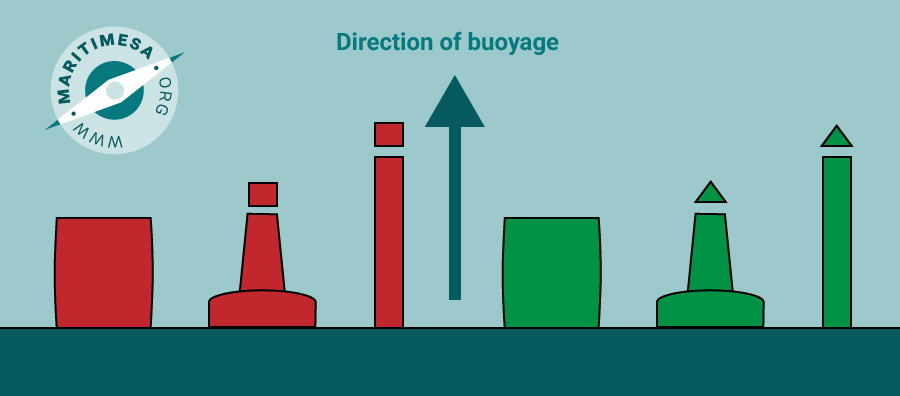
Lateral marks.
Purpose.
Lateral marks are used for well defined channels in conjunction with the general direction of buoyage. They indicate the port and starboard hand sides of the route to be followed.
Direction of buoyage.
The conventional direction of buoyage is defined in one of two ways:
- Local direction of buoyage. The direction taken by the mariner when approaching harbour, river, estuary, or other waterway from seaward.
- General direction of buoyage. The direction determined by the buoyage authorities, based upon the principle of following a clockwise direction around continents. It is usually given in the sailing directions and if necessary, indicated on charts by the appropriate (arrow) symbol in magenta.

Preferred channels.
At the point where a channel divides, when following the conventional direction of buoyage, to form two alternative channels to the same destination, the preferred channel is indicated by a modified lateral mark.

- The preferred channel is to starboard. Marked by a port hand buoy with a green band around it.
- The preferred channel is to port. Marked by a starboard hand buoy with a red band around it.
Colours.
Red and green are the colours reserved for lateral marks. Red for port hand marks and green for starboard hand marks (in region A).
Top marks.
Port hand marks carry can shaped top marks and starboard hand marks carry conical top marks.
Lights.
Red and green lights are used for lateral marks. Lateral marks with specific purposes have specified rhythms:
- Composite group flashing (2+1) for preferred channel marks.
- Quick or very quick for new danger marks.
Sequence.
If marks at the sides of channels are numbered or lettered, the sequence follows the conventional direction of buoyage.
Special marks.
Can and cone shapes coloured yellow may be used as special marks in conjunction with the lateral marks for special types of channel marking.

